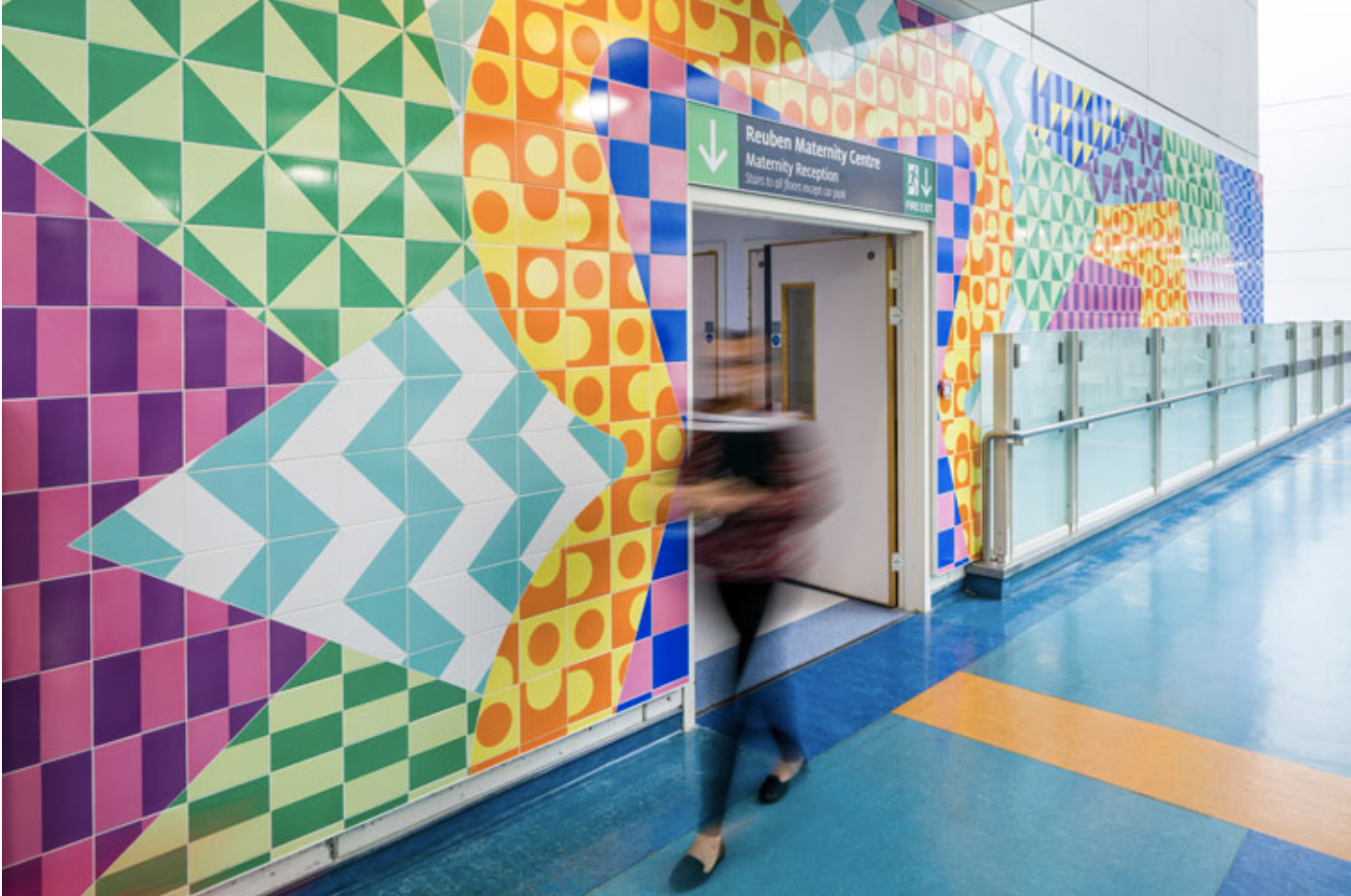It has long been believed that there is an underlying healing power of art. From music, dance, poetry, theatre to interactive art and more, there is undoubtedly a link between art and wellness. Discover what Design Week, Freize, the WSJ, and others have to say on the topic:
Design Week //Filling Hospitals with Art Reduces Patient Stress, Anxiety and pain
Chelsea and Westminster Hospital has found that the mental health and experiences of those receiving intrusive examinations, surgery, chemotherapy and emergency care are improved when visual art is installed. Read More

Frieze //Art in Hospitals Reduces Depression and Pain, Research Finds
The study follows art lessons and trips to museums becoming available as NHS prescription options. It also features research that found that more than 80% of 50 women who underwent colposcopy examinations said that the art ‘greatly improved their anxiety and experience’. Feelings of depression fell by a third amongst patients undertaking chemotherapy. Clinical staff also found that art helped sooth children’s anxiety. Read More
Niio //The Healing Power of Art
Although the benefits of art in medical waiting areas, wards, private treatment rooms and hospital rooms have long been accepted, they have not been widely embraced, beyond traditional pictures and prints. Increased awareness of the benefits of mindfulness and engaging experiences has allowed digital art, displayed on screens or through projectors, to bestow a more immersive atmosphere in health environments. Interactive works, especially those that react to motion, allow a patient to become one with the art, offering a calming and distracting effect. The concept of moving, rotating art is particularly engaging for children. Read More
Interactive Media Wall at Boston Children’s Hospital
U.S. News & World Report //The Power of the Creative Arts in Health and Healing
What does creativity have to do with health, healing and well-being? Studies show that engaging in any creative process is healing. Whether you make a simple drawing or collage, look at art or talk about it, creativity and the arts can help you:
- Express thoughts and emotions that can be hard to put into words
- Lower stress and anxiety
- Relax and feel calmer and happier
- Connect with yourself on a deep level, no matter what you are going through
- Find meaning in life experiences
- Cope with grief and loss
- Form new connections with others
- Shift your focus away from pain or stressful thoughts to activities that are soothing, enjoyable and fun
- Create something unique that gives you a sense of pleasure and accomplishment
JSTOR // Healing Art in Hospitals Today
Hospitals working to prioritize an arts budget and curator must believe deeply in this endeavour—and be willing to pay for it. Baron and Greene highlight the challenges hospitals face in developing an arts budget, tracking international art budgets for new hospitals in Norway, the Netherlands, Italy, Canada, France, West Germany, and the U.S. The most common enforced art expenditure they noted was 1% of the cost of the construction cost of the hospital. Determining and selecting the art for the hospitals is another part of the equation and each hospital handles this differently. Read More
The Wall Street Journal. //More Hospitals Use the Healing Powers of Public Art
Researchers are learning more about the precise ways paintings and other works of art help patients and families in the healing process. With studies showing a direct link between the content of images and the brain’s reaction to pain, stress, and anxiety, hospitals are considering and choosing artworks based on the evidence and giving it a higher priority than merely decoration for sterile rooms and corridors. Read More
Journal of the Royal Society of Medicine // Visual Art in Hospitals: Case Studies and Review of the Evidence
That the arts and sciences are seen as two contrasting disciplines, and indeed are defined as such, immediately presents challenges to a discussion of art in medicine, one of the foremost branches of science. There has, nevertheless, always been an awareness of the ‘art of medicine’ and a realization that health is influenced by a wide range of factors, many of which fall outside the conventional boundaries of medical science. Read More
